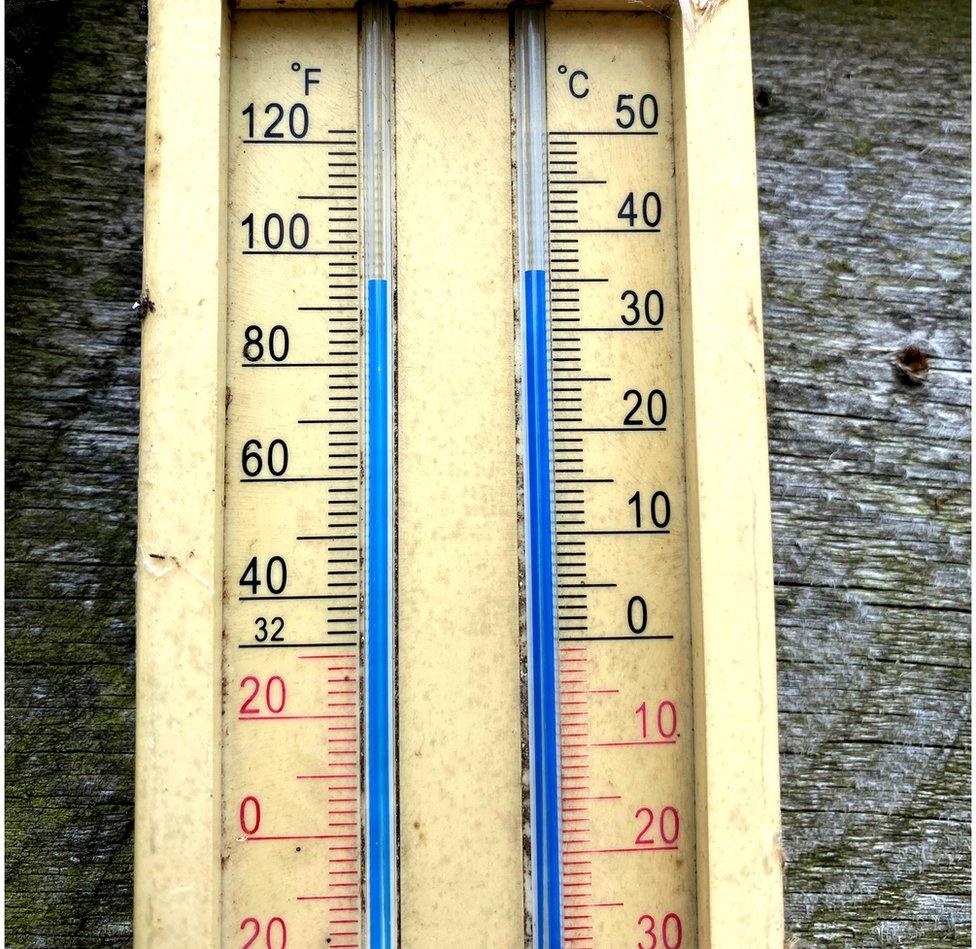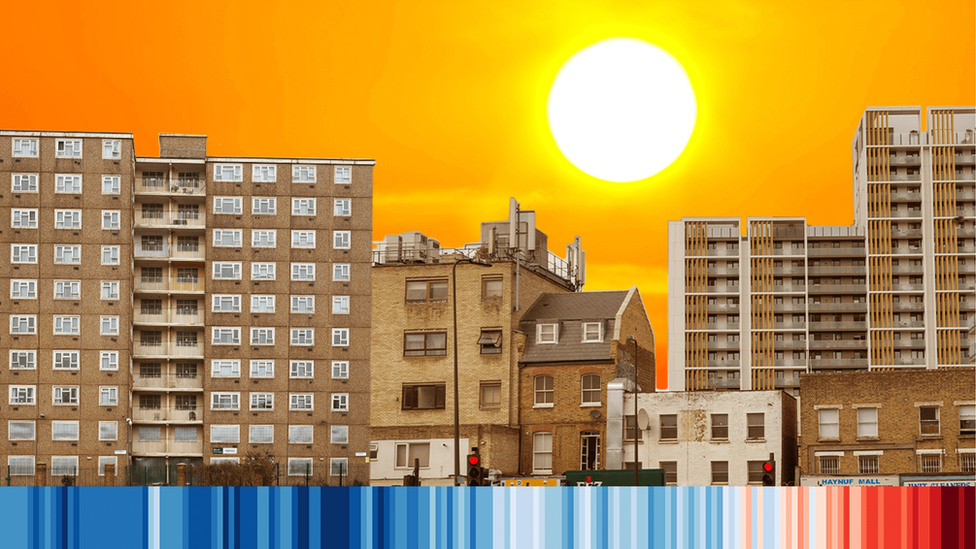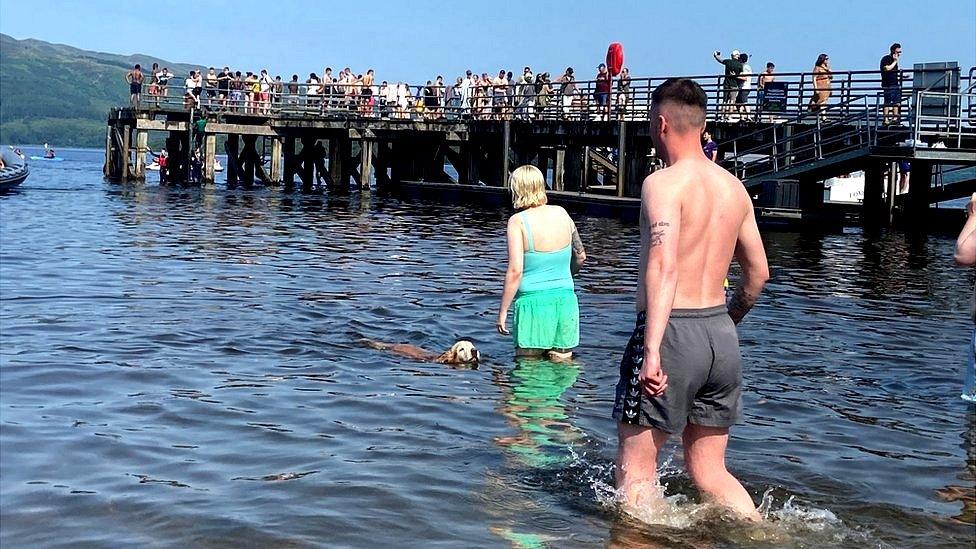Scotland's warmest day was even hotter at 35.1C
- Published
- comments

The mercury rose higher than it has ever gone in the south of Scotland
Scotland's record-breaking highest temperature, achieved on Tuesday, is even higher than first thought.
It was reported provisionally that Charterhall in the Scottish Borders set a new high of 34.8C on Tuesday.
This beat the previous hottest day - when the dial hit 32.9C at Greycrook in the Borders in 2003.
But confirmation has been issued by the Met Office of a provisional reading of 35.1C (95.1F) at Floors Castle in Kelso in the Scottish Borders.
Tuesday saw temperature records broken across the UK as an amber weather warning for extreme heat covered parts of Scotland and much of England came under a red warning.
Thermometers hit 40.3C at Coningsby in Lincolnshire, at 16:00 BST.
In Wales, Hawarden in Flintshire registered 36.2C, provisionally the second highest temperature on record in Wales, but below Monday's 37.1C.

Scotland registered a record-breaking temperature of 35.1C at Floors Castle, Kelso on Tuesday
Elsewhere in Scotland the highest temperatures were recorded at Eskdalemuir (32.3C) and Threave (31.2C), both in Dumfries and Galloway, earlier on Tuesday.
Unofficial weather stations had shown unverified readings of 35C to 36C.
The extreme temperatures were blamed on climate change.
Met Office chief of science and technology Prof Stephen Belcher said exceeding 40C was "virtually impossible" in an undisrupted climate, but due to climate change "driven by greenhouse gasses" such extreme temperatures had become a reality.
He said if there continued to be high emissions "we could see temperatures like this every three years".
On Wednesday, transport continued to be affected by the heatwave.
Network Rail said no direct trains were running between London and Scotland due to heatwave damage.
It urged passengers to check before they start their journeys and only to travel if absolutely necessary.
The Scottish Fire and Rescue Service (SFRS) also reiterated warnings over wildfire risk in southern and eastern parts of Scotland.
The alert had been raised to "very high".
FRS Deputy Assistant Chief Officer Bruce Farquharson said: "At this time of year, the ground vegetation is a combination of green growth, with a relatively high moisture content, and dead vegetation lying on top, which can easily ignite and spread quickly over a large area."
Related topics
- Published19 July 2022

- Published18 July 2022

- Published19 July 2022

- Published18 July 2022

- Published18 July 2022
